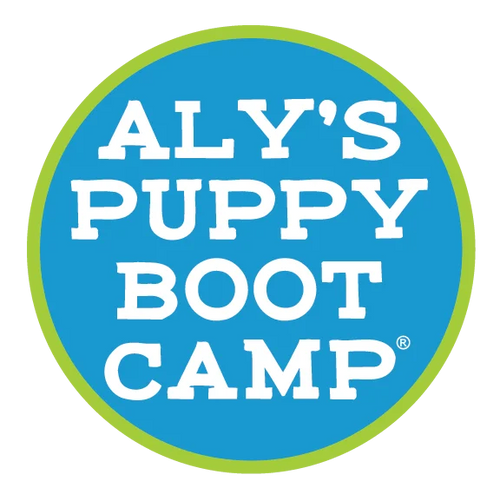From Chaos to Calm: Managing High-Energy Dogs
On this beautiful journey of learning to speak "dog" more fluently, I've experienced numerous "Aha!" moments. The sheer joy and excitement of working with animals assure me that there are still many more discoveries ahead. Collaborating with renowned trainers across the country has sparked quite a few of these enlightening moments. One such moment stands out vividly: it was when a concept I had only read about and pondered over suddenly became crystal clear and deeply meaningful. I gained a profound understanding of the significant difference between compliance and acceptance.
Four Stages of Dog Behavior
Some background information: There are four stages that a dog will go through as you work with your dog. In your quest to establish a calm state of mind you will find that your pooch will vacillate between all four stages at one point or another. At any given moment your dog will be in a state of:
1. Fight
2. Flight
3. Avoidance
4. Acceptance (notice I didn’t merely say compliance, more on that later)
The goal is that you confidently move through stages 1-3 and get to 4. And believe it or not, with practice, patience and perseverance, you get there more quickly and easily as you consistently work with your dog. And truthfully, as you learn how to be effective in your communication with your dog and set your pooch up for success, the fight won’t be so dramatic, the flight desire will diminish, the level and duration of avoidance will be reduced and you will achieve more than mere compliance to your request; you will actually be in the sweet spot called acceptance. It’s at this point that you are building trust and relationship with your dog. It’s at this point that your dog will truly be able to embrace and enjoy a calm state of mind. We talk about this in our Facebook Group Aly's Insider Club!
Often times, people get so shook up in the fight or flight moments, and are not prepared for it, that they can react in a surprised fashion, get emotional, freeze up, stop, cry, stomp their feet, get frustrated, let go of the lead, try a treat, scream, give up—well, you get the idea. My hope is now that you know that you will experience fight and flight, and avoidance, you will be prepared for it. So what will it look like? Dogs can thrash their heads around, paw at their lead or Halti, might make noise, move backwards away from you, jump up, try to get away, come up the leash at you, bite their lead, freeze up and shake, etc. Dogs can be very creative at how they will express their fight/flight/avoidance actions, just know that if you learn how to correctly stick with it, these phases will pass.
OK, now that you are prepared for the flight/fight/avoidance moments, and it doesn’t scare the heck out of you; now you are at the moment when you can experience the sweet spot of acceptance. And, here is where it can get tricky; just because the fight/flight moment is over doesn’t necessarily mean you are at acceptance. Often times, there is this middle phase called avoidance and/or merely compliance. If you are not adept at reading a dog’s body language, it is very easy to mistake avoidance and/or mere compliance, for acceptance. Have you ever seen a dog sitting by it’s owner, but it’s head is turned away, lips are tight, mouth is shut, eyes are straining away, ears in a tight position? Just because that dog’s butt is on the ground in a ‘sit’ position or even wagging it’s tail, does not mean that dog has accepted what you’ve asked of him. If you misread avoidance and/or mere compliance for acceptance, you will have missed the most important part of the puzzle.
Once past avoidance and/or mere compliance, you reach Nirvana—acceptance. Notice that I’ve chosen the word acceptance over compliance. According to the dictionary, to accept means “to consent to receive something offered; the action or process of being received as adequate or suitable”. On the other hand, the dictionary defines compliance as “the action or fact of complying with a wish or command.” From a dog-human relationship point of view, I think the difference is significant. There are many ways to force or gain compliance with a dog, but it takes relationship, trust and technique to gain acceptance.
Once you’ve gotten to acceptance, that is the moment when all pressure needs to cease. If pressure remains too long, you can push a dog straight back into the previous stages of fight, flight and avoidance. When working with a dog ‘pressure’ can come in many forms from leash pressure, spatial pressure, physical pressure, voice pressure, etc. So how do you know when you have acceptance? I wish I had an easy answer for you. It takes experience. It takes practice to see it. It takes a genuine desire to learn how to speak dog better. It takes the time it takes for you to be able to recognize the signs. Here are some signs that can signal the move to a state of acceptance: soft mouth that is opening, a relaxed body, a soft eye, a nose smelling, ears at a soft, neutral position, a body that isn’t rigid, just to name a few.
My goal in talking to you about these four stages of fight, flight, avoidance, and acceptance is to prepare you and to encourage you to become observers of dogs as you are learning to live life in a new way with your pooch. My hope is that you set your dog up for success as you work through stages one to three so that you are aware when you’ve actually reached stage 4. So don’t fret, don’t fear, don’t be afraid to fail on this journey. This is a process that takes time. The reality here is that you just have to jump in and begin. It takes what it takes for you and for your dog to work through the different stages on the road to a calm state of mind. Prepare yourself, get your emotions out of the way and get ready to work your way to acceptance. We'd love to help you, check out our Online and in person training options!



